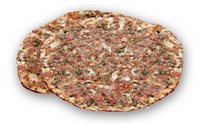Choosing a guidebook for a trip is always a difficult proposition. Scope is a primary consideration, of course. If you’re just going to Paris you certainly don’t need a guidebook for all of France. There are size considerations: you don’t want to lug around a doorstop, but sometimes the more compact guides are just too short on valuable information. Ultimately, once the physical considerations are taken care of, the crux of the matter is to find a guide that both fits your travel style and is user-friendly. It’s not always so simple to find the Platonic guide for your trip, and sometimes you might have to go for multiple sources. Luckily numerous internet resources, often from the major travel guide publishers, are available; they can be great for filling in the gaps left by your primary guidebook.
I’d call myself a middle-budget traveler (though by American standards perhaps the low end of middle). I want a comfortable room, but I don’t need luxury. Two-star hotels are usually more than adequate. I used to always save money by going for shared-bathrooms, but by the time I hit 40 I started going for the private facilities more frequently (no pun intended), and by 45 my transformation into an ensuite guy was complete. In cities, I generally like hotels to be centrally located, and I’ll either go for a simpler place or pay a bit more for location. When it comes to food, I go for a wide range in price, from street snacks to places in an upper-moderate price range. Rarely do I go to really high-end places, though I’ve made exceptions, such as the quite amazing
San Domenico in Imola, Italy, near Bologna. My philosophy is that one’s food for the day should always cost more than one’s accommodation. I mention all this to give you some of the criteria by which I choose a guidebook.
Two of the most venerable American guidebook series, Fodor’s and Frommer’s, are virtually useless in most cases. Fodor’s especially is oriented toward unadventurous, prissy American tourists with money to burn, and the books are a graphic disaster when it comes to gleaning useful information. Frommer’s is not that much different, even if they did start out with a budget travel focus, i.e. the X Dollars a Day format. Their guides are definitely more user-friendly than Fodor’s, and they do tend to have a greater range of accommodation listed. I have used Frommer’s guides when they happened to be the best (or most compact) available option for specific cities I have visited. On my bookshelf I see their San Antonio & Austin and Nashville & Memphis guides. The latter was money well spent since I visited those cities on two separate trips. I am happy to use the free internet content of these companies to supplement my other information. This is especially useful when choosing a budget hotel. If a more downscale guide recommends a cheap hotel, a listing in Frommer’s means that it won’t freak out those prissy American tourists we all hate so much.
In the ultra-budget category there are the Let’s Go! guides. These are researched and written by Harvard students, and are aimed at youthful, shoestring travelers. I can’t imagine why anybody over 25 would ever use one, unless they were traveling due to homelessness. Thinking about Let's Go! reminds me of some of the frugal backpackers I’ve met while traveling–they were trying to see how long they could travel and how much of the world they could see on a very limited budget. They saw a lot of the world, but I’m not sure that many of them had too much fun.

And while we’re on the subject of useless, let’s talk about Rick Steves. You might have seen this nerdy nincompoop with a backpack on TV, on one of his “through the back door” programs. The Steves formula is very odd. His guides seem to be aimed at people who want to think they’re adventurous, independent travelers while being told exactly where to go. If you have 14 days to spend in a country, Steves can tell you where to go, where to stay, and how to account for every minute of your time. He doesn’t bother with superfluous information about cities or hotels that are not on his very short list of picks. I find this approach anathema, since for me a good deal of the fun of travel is the research. A Steves recommendation can be a gold mine for a good, small hotel. Forget about trying to get a reservation at the excellent
Hotel Castex in the 4th arrondissement of Paris; it’s always booked up months in advance by Steves followers (and I think this has driven the prices up). I secretly suspect Steves’ popularity has something to do with a strange fetish–that there’s an entire class of people who get off on being told where to go by a nerdy white guy.
In general there are three publishers whose guides tend to fit my travel style: Lonely Planet, Moon’s Handbook series, and the Rough Guides, which really aren’t that rough at all. All three started out marketing guidebooks for backpackers and intrepid travelers, but over the years they started reaching out to a wider audience by listing a broader range of hotel and restaurant options. All three publishers are pretty much similar in the way they organize information. All cover the off-the-beaten-path destinations as well as the major tourist magnets. All are loaded with solid, practical information. It’s often a matter of choosing one or the other based on an assessment of their geographical strengths. I’ve used Lonely Planet for many trips, including India and China, and I’d say they’re still the best bet for those two countries. Almost every western traveler in India who is not on a package tour seems to have grown a Lonely Planet guide as an additional appendage. My biggest complaint about Lonely Planet is that they haven’t mitigated the orthodox shoestring mentality as much as the others, so one often needs to consult secondary sources for hotel recommendations (and always for restaurant recommendations). Moon is especially good for Indonesia (the original Moon Handbook), and I like their Colonial Mexico and Havana guides very much too. Rough Guides, as I implied above, are probably the least rough of the three–perhaps somewhere between Frommer’s and Lonely Planet. They do a nice, compact cities series, and I’ve used their Madrid and Lisbon when I did single-city trips to those places. If I remember correctly, they did a dedicated South India guide before any of the others, so I’ve used that one too. Much of Rough Guide’s content is also available online, at no cost.
I have occasionally used the guidebooks published by Cadogan. They’ve come in handy for travel in regions, such as Venetia and the Dolomites, that were not available in single volumes from other publishers. I’d say their focus is a bit more upscale than Rough Guides, and they wouldn’t be a first choice when other options were available.
Sometimes you might want a guidebook that covers cultural attractions in greater depth than a more general guide. The Blue Guides, translations of the French Guides Bleues, are quite exhaustive and comprehensive, though they are stiff and pedantic in a way that can be rather comical. I have used Blue Guides as supplements in South India and Sicily. They are not much use in the hotel and restaurant departments, however, giving only cursory and poorly annotated listings.
Without a doubt the best designed and most user-friendly guidebooks are the Access guides. The Access series was the brainchild of
Richard Saul Wurman, a design visionary. Wurman’s life’s work has involved making complex information easy to understand. With Access guides he combined his design and information organization skills with his love for travel. The original Access guides were all researched and written by Wurman himself. They generally covered a single city, cities that Wurman loved. He ultimately sold the concept and the imprint to Harper Collins. The original titles still list Wurman as author, and all Access guides still follow his design concept, but new titles by other authors have been added. The Wurman approach is to divide a city into neighborhoods that are logical units from a traveler’s perspective. A master map at the front of the book shows the breakdown, then each section gets its own detailed map. Within the chapter for a neighborhood, hotels, restaurants, attractions, etc. are organized by proximity rather than category, and are color-coded to represent the type of place that is being described. These are all numbered and keyed to the map. So if you're leaving the British Museum and you want to find a nearby place for lunch, you can get a quick, visual sense of the options. The fact that Wurman has impeccable taste in restaurants make the editions that he wrote especially desirable.
Throughout my travels I've learned an important lesson: the writer who can recommend a good hotel and successfully research and describe local attractions is not necessarily the person you should trust to choose your restaurants. This is perfectly logical. Those of us who care about food know that we need our recommendations from people who really care about food. So finding restaurants requires research above and beyond the restaurant section of your guidebook. While in Vietnam, however, I stumbled on a happy shortcut. There were many French travelers in Vietnam, some of whom I ended up hanging out with, and many of them carried the Guide Routard, a French backpacker's guidebook series. Unlike the Let's Go! and Lonely Planet authors, however, the French backpackers who write these books really know how to pick a good restaurant that won't break the bank. I ate at several excellent places in Vietnam that weren't listed in any of the English-language guides. In Florence I stopped into a restaurant,
Croce al Trebbio, because they displayed the Guide Routard recommendation in the window. It was an excellent, reasonably priced, traditional Tuscan place on the wonderfully named Via Delle Belle Donne. Now when I travel in Europe I always keep my eyes peeled for Guide Routard reviews in the windows of restaurants. If I'm not mistaken, Routard has even reviewed
El Gran Castillo de Jagua in the outer boroughs section of their New York guide.











